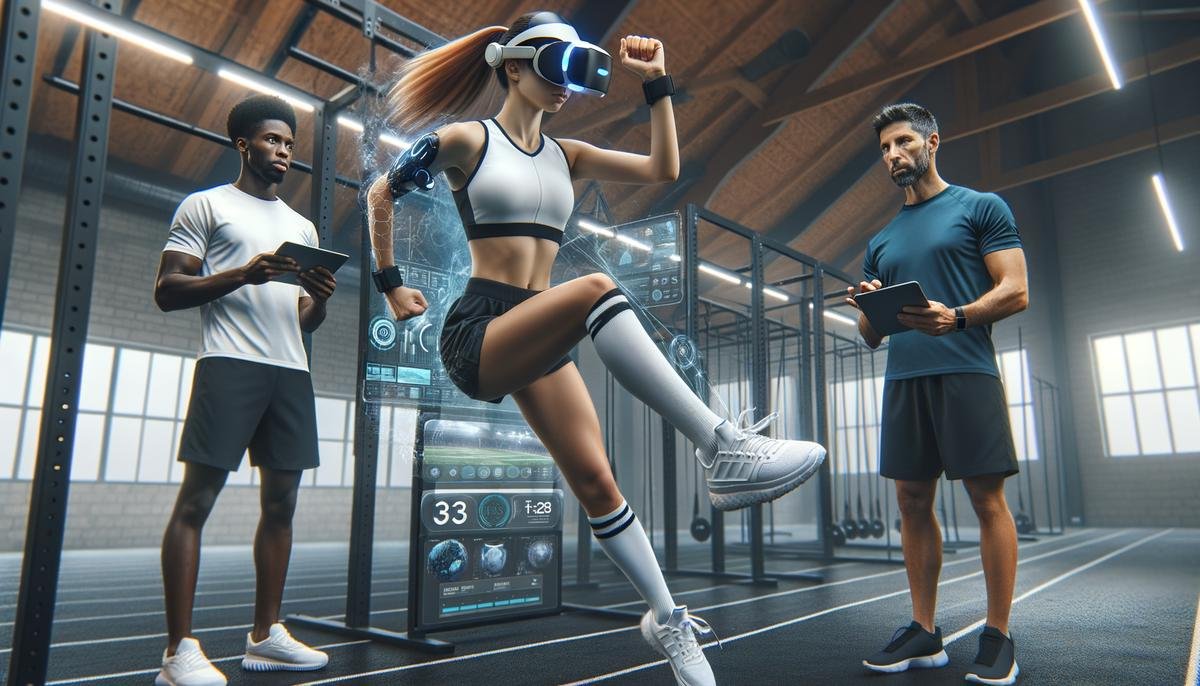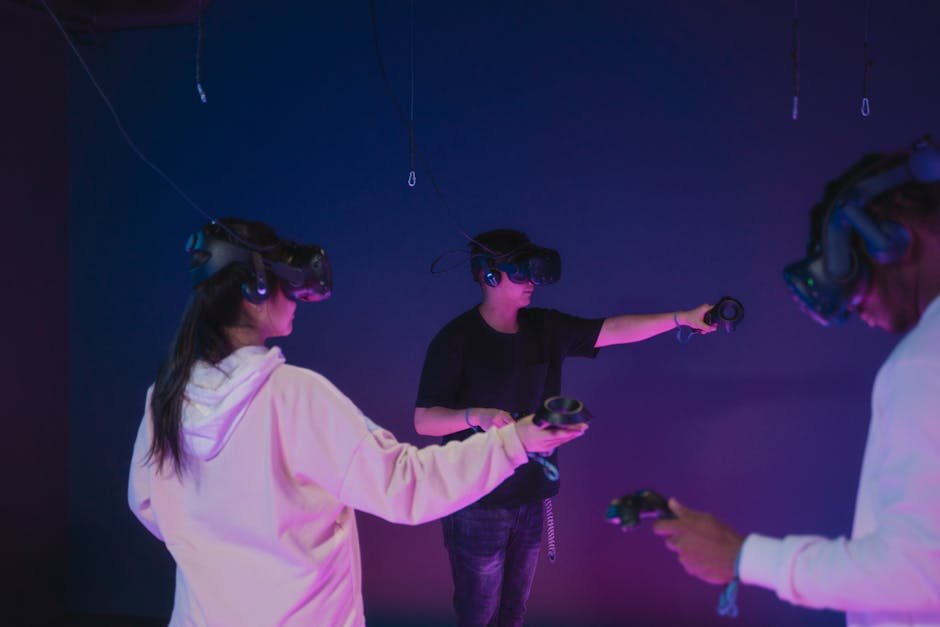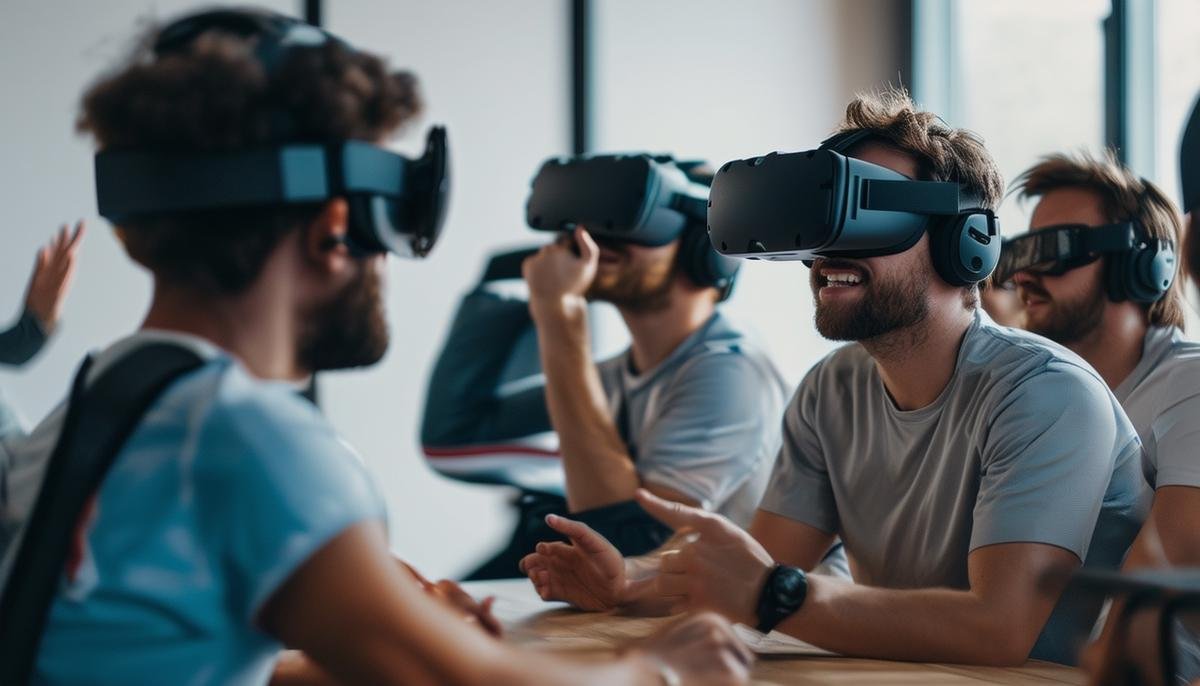STRIVR’s AI VR training platform is transforming sports training by offering advanced interactive simulations. This technology immerses athletes in realistic scenarios, allowing them to practice and refine their skills safely and effectively. With the integration of AI, the platform adapts to each athlete’s performance, providing personalized and dynamic training experiences. From football to basketball, STRIVR caters to various sports disciplines, enhancing both physical and mental preparation while minimizing injury risks.
Introduction to STRIVR’s AI VR Training
STRIVR’s AI VR training platform creates lifelike scenarios where athletes can practice and refine their skills without physical risks. Athletes wear VR headsets and engage in simulated training sessions driven by AI that adapts to each player’s performance. The platform incorporates high-fidelity 3D graphics and realistic physics to mimic real-world sports situations.
Key features of STRIVR’s platform include:
- Real-time feedback
- Detailed performance analytics
- Versatility across various sports disciplines
- Customizable training programs
Beyond physical training, STRIVR’s platform enhances mental preparation. Athletes can rehearse game strategies and decision-making skills in a high-pressure but risk-free setting. The platform also supports team-based exercises, fostering better team cohesion.
Coaches benefit from comprehensive data analytics tools, allowing them to monitor progress and make data-driven decisions. As VR and AI technologies advance, the platform evolves, incorporating the latest innovations to provide cutting-edge training tools.

Enhancing Athlete Performance
STRIVR’s AI VR training facilitates skill refinement and technique development through varied training scenarios and simulations. Athletes can repeatedly practice specific skills, receiving real-time feedback and precise analytics on their form and execution.
The platform addresses the psychological aspect of performance by simulating high-pressure situations. AI-generated scripts create dynamic dialogues and situational challenges, helping athletes build mental resilience and decision-making skills under stress.
Sound and computer graphics enhance the immersive nature of the training experience. Athletes hear realistic ambient noise while engaging in their virtual training, helping them acclimate to environments full of distractions. The graphics provide detailed visuals that replicate game settings accurately.
The AI continually adapts to the athlete’s progress, presenting new challenges that ensure sustained engagement and improvement. STRIVR’s platform also supports the integration of biofeedback systems, allowing coaches to monitor data such as heart rate and stress levels during virtual training.1

Safety and Injury Prevention
STRIVR’s AI VR training minimizes physical risks associated with traditional sports training. Athletes can practice contact-heavy actions without actual physical contact, benefiting high-risk maneuvers and players recovering from injuries.
The platform incorporates wearable sensor technology to monitor physiological and biomechanical data. AI algorithms analyze this data to identify patterns and predict the likelihood of injuries, offering real-time alerts and recommendations to trainers.
“STRIVR’s technology has revolutionized our approach to injury prevention. We can now identify potential risks before they become actual injuries.”
– Anonymous Sports Medicine Professional
STRIVR integrates injury recovery systems such as pneumatic compression devices and cryotherapy simulations into virtual training regimens. This approach ensures that training sessions encompass both performance enhancement and recovery, allowing athletes to achieve optimal conditioning while safeguarding their well-being.

Real-World Applications and Success Stories
Professional sports teams have integrated STRIVR’s AI VR training into their routines with positive results. NFL teams have used the platform to develop quarterbacks’ decision-making skills, while NBA teams have adopted it for individual player development and team strategies.
A top European soccer club leveraged STRIVR’s training to practice set pieces, resulting in improved goal-scoring opportunities and overall team performance. Olympic athletes have used customized VR training modules to mentally rehearse their routines and anticipate potential challenges.
Collegiate sports programs have also implemented VR training to enhance game preparation and player development. Quarterbacks have utilized the platform to review game footage and practice play execution, leading to better game-time decisions and a deeper understanding of defensive schemes.
Professional athletes like Deshaun Watson have provided testimonials on the practical benefits of STRIVR’s technology. Watson used VR training to study defensive formations and practice throws during his time at Clemson, contributing to his development as a top quarterback.2

Future Prospects and Innovations
STRIVR’s AI VR training platform is poised for significant advancements in artificial intelligence and virtual reality technologies. These developments are expected to enhance the training experience and effectiveness for athletes.
Upcoming improvements in AI include:
- More sophisticated machine learning algorithms
- Better adaptation to athletes’ evolving needs
- More personalized training regimens
- Improved prediction of strengths and weaknesses
- Real-time adjustments to training drills
Advancements in VR hardware are also anticipated:
- More comfortable headsets
- Higher resolution displays
- Improved tracking capabilities
- Integration of haptic feedback technology
The incorporation of biometric data will be a key feature in the next generation of STRIVR’s platform. By measuring physiological metrics such as heart rates and stress levels, AI can offer deeper insights into how athletes respond to different types of training, allowing for more comprehensive training programs.
The combination of augmented reality (AR) with VR presents another area of potential growth. This hybrid approach can create versatile training experiences that blend digital enhancements with physical environments, offering both immersion and practicality.
STRIVR’s platform also has the potential to expand beyond traditional sports into areas such as:
- E-sports
- Dance
- Martial arts
- Rehabilitation exercises
As the technology advances, the possibility of real-time, AI-powered coaching becomes more feasible. A virtual coach could provide immediate feedback during training sessions, offering tactical advice and suggestions based on live performance data.
The application of VR training may also extend to broader athletic and wellness contexts, including corporate wellness programs and physical education curriculums, potentially making physical activity more accessible and engaging for a wider population.

STRIVR’s AI VR training platform combines AI, VR, and data analytics to offer effective training methods for athletes at various levels, aiming to help them achieve their potential.




